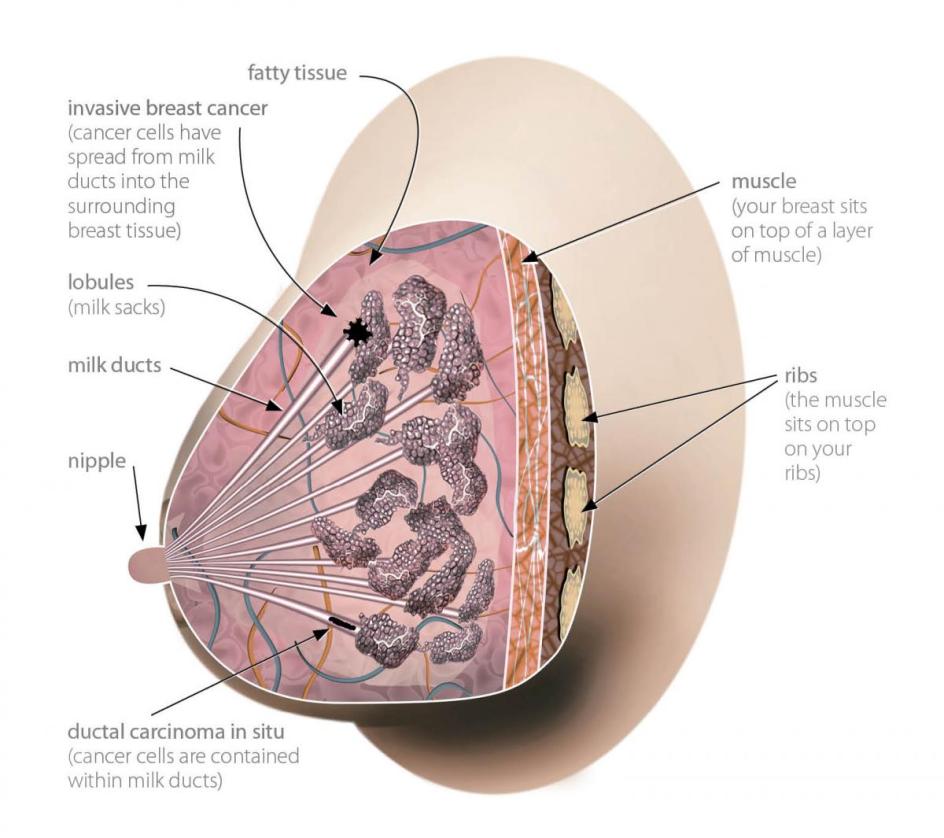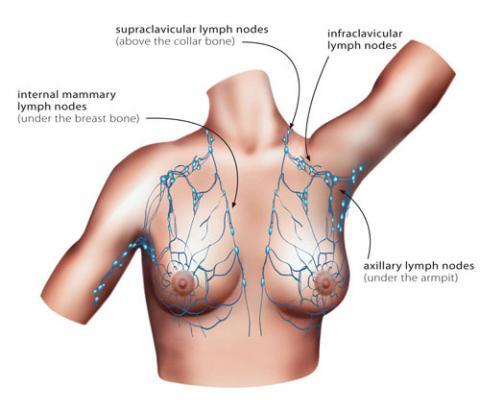What is breast cancer?
Breast cancer happens when abnormal cells in the breast grow in an uncontrolled way. Breast cancer is cancer that starts in the breast. Breast cancer can develop at any age, but is more likely as you get older.
Inside a breast
To understand how breast cancer starts, it helps to know about breasts and their structure.
Breasts are made up of:
- lobules, which produce breast milk
- ducts, which carry milk to the nipple
- fatty and connective tissue, which surround the lobules and ducts.

Breasts and the lymphatic system
Lymph nodes are small, rounded glands that range in size from about 1 mm to 25 mm. They are part of the lymphatic system and help to protect the body from infection. Everyone has a different number of lymph nodes.
Close to the breast, lymph nodes are located:
- in the armpit (axillary nodes), where we have 15 to 30 lymph nodes
- under the breastbone (internal mammary nodes)
- in the neck (supraclavicular nodes).
The lymph nodes in the armpit – which are closest to the breasts – drain lymph fluid from the breast. This means they are often the first place where breast cancer cells spread. About 1 in 3 women with breast cancer have cancer cells in the lymph nodes in their armpit.[2]

How breast cancer develops
Breast cancer occurs when abnormal cells in the breast grow in an uncontrolled way, forming a tumour.
Breast cancer can start in the ducts or lobules of the breast. The site where the cancer starts is called the primary cancer. Breast cancer can be:
- non-invasive (sometimes called pre-cancer) – this is where cancer cells stay in the ducts and lobules of the breast
- invasive – this is where the cancer cells spread into the surrounding tissue, or to other parts of the body such as the bones or liver to become metastatic (or secondary or advanced) cancer.
Read about the different types of breast cancer.

